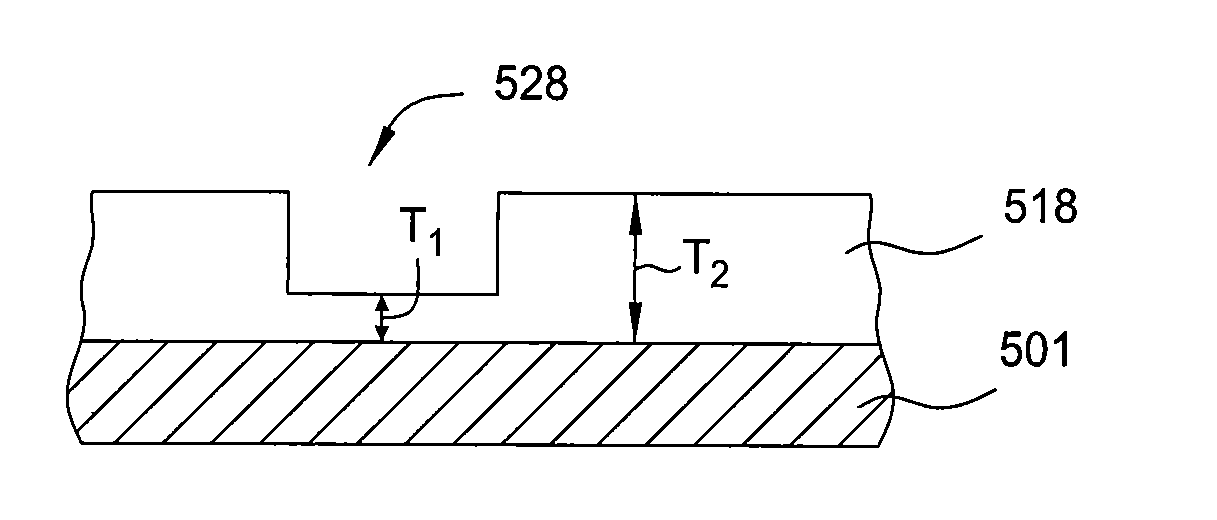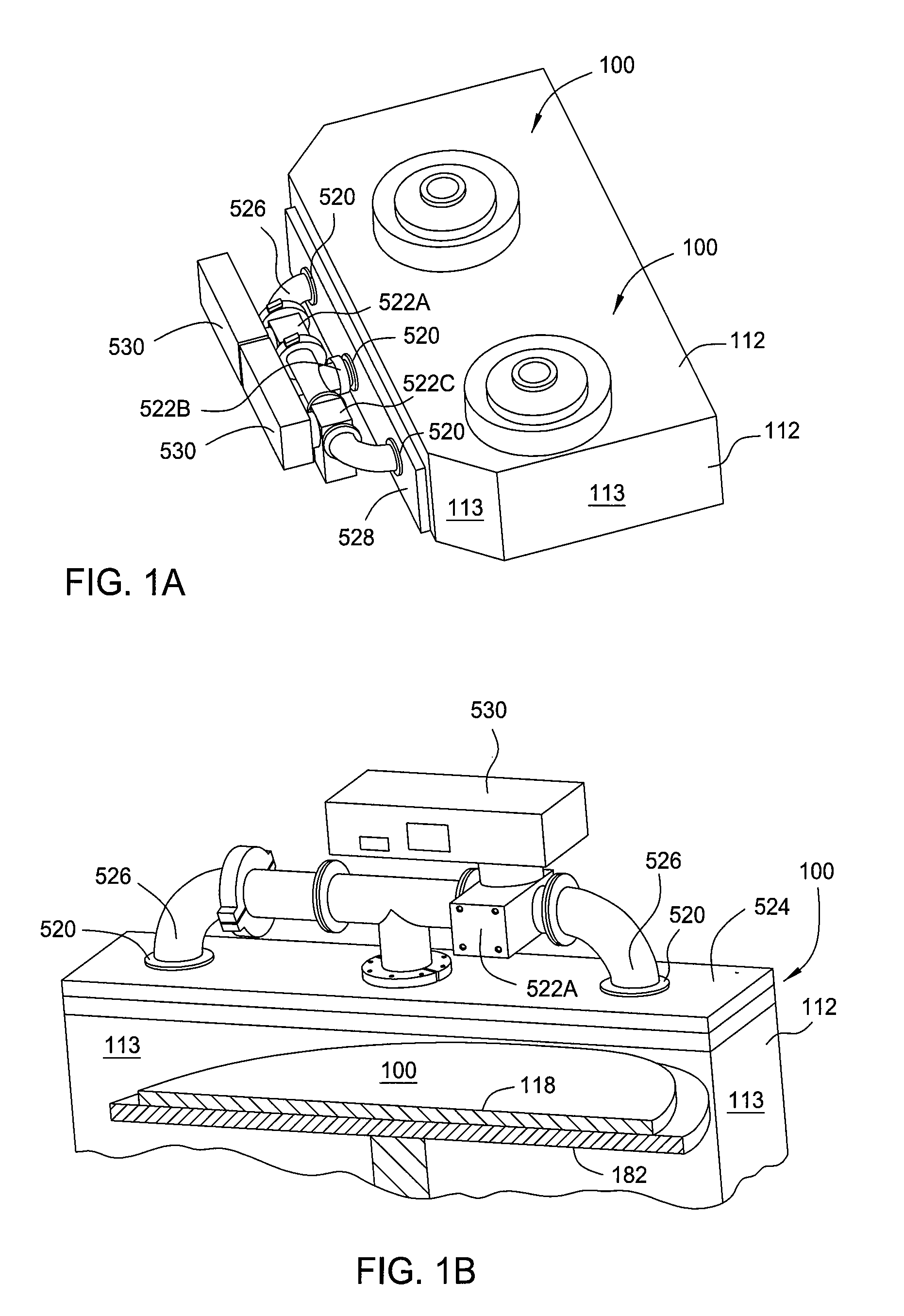Methods of end point detection for substrate fabrication processes
a technology of end point detection and substrate, which is applied in the direction of fluid pressure measurement, cleaning using liquids, instruments, etc., can solve the problems of compromising the integrity of features formed thereon, unable to stop the etching process by a predetermined time, and conventional end point detectors for plasma etching cannot operate reliably
- Summary
- Abstract
- Description
- Claims
- Application Information
AI Technical Summary
Benefits of technology
Problems solved by technology
Method used
Image
Examples
example 1
EXAMPLE 1
Removal of a Native Oxide Material from the Surface of a Substrate or a Chamber Body
[0093]In one example, an oxide etching process may be performed to remove a silicon oxide material or a native oxide material (the oxide that forms from exposure to normal atmosphere on a silicon or other reactive material surface) from the surface of a substrate. Such a process can also be used to clean or condition the chamber and remove an oxide containing material from the chamber walls, chamber body, substrate support surface and other area inside the chamber.
[0094]The oxide etching process or oxide removal process described herein is also suitable for selective material removal. Examples of selective material removal (the removal of materials reactive to one etching / removal agent while other surrounding materials are not reacting and not being removed) includes, for example, removal of a material having different thicknesses in different surface area of the surface of a substrate, or ...
example 2
EXAMPLE 2
Removal of a Pad Oxide Material
[0107]During substrate fabrication, a pad oxide material layer formed on a small portion of the surface of a gate structure is generally required to be etched and removed before depositing the next material layer. On a typical patterned wafer substrate surface, the surface area of the pad oxide material layer is relatively small such that these pad oxide materials are difficult to etch and remove without formation of undesirable divot structures.
[0108]An oxide removal process is used to etch a pad oxide material from the surface of the substrate prior to depositing a gate oxide layer. The etching process may use etching gasses, such as a mixture of ammonia (NH3) and nitrogen trifluoride (NF3) gases. Factors which need to be considered in establishing the duration of the ideal etch process time include: the thickness of the gate oxide layer to be removed, the geometry of the substrate being cleaned, the volume capacity of the plasma, the volume...
example 3
EXAMPLE 3
Removal of a Copper Oxide Material During Chamber Conditioning
[0116]Before or after a copper deposition process inside a substrate processing chamber, it is desired to remove a copper oxide material from the substrate processing chamber so that the chamber can be ready for use with the copper oxide material initially absent from the chamber. A hydrogen gas (H2) is delivered into the chamber and a plasma is ignited to generate a hydrogen-containing plasma and clean and condition the chamber.
[0117]A chamber conditioning process or a metal material removal process is used to remove a copper oxide material from the surface of the chamber walls, substrate susceptor, and various portions of the chambers, before depositing a metal layer, such as a copper layer. In one embodiment, the metal material removal process may be a process used to remove a metal layer that contains a material including copper, tungsten, titanium, cobalt, nickel, tantalum, palladium, platinum or combinatio...
PUM
| Property | Measurement | Unit |
|---|---|---|
| Pressure | aaaaa | aaaaa |
| Thickness | aaaaa | aaaaa |
| Pressure | aaaaa | aaaaa |
Abstract
Description
Claims
Application Information
 Login to View More
Login to View More - R&D
- Intellectual Property
- Life Sciences
- Materials
- Tech Scout
- Unparalleled Data Quality
- Higher Quality Content
- 60% Fewer Hallucinations
Browse by: Latest US Patents, China's latest patents, Technical Efficacy Thesaurus, Application Domain, Technology Topic, Popular Technical Reports.
© 2025 PatSnap. All rights reserved.Legal|Privacy policy|Modern Slavery Act Transparency Statement|Sitemap|About US| Contact US: help@patsnap.com



